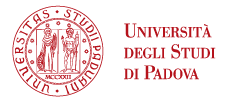Urban Planning and Design
Coordinator:
Prof. Michelangelo Savino, michelangelo.savino@unipd.it
Collaborators:
arch. Enrico Redetti, enrico.redetti@unipd.it
urb. Francesco Palazzo, francesco.palazzo@dicea.unipd.it
Research areas:
- Urban Regeneration practices before and after the "Great Crisis" (2007-2014)
The research is focused on Urban Regeneration processes in the Contemporary City, investigating not only the features and contents of urban projects and policies, but also critically reflecting on their capability to cope impacts of social, economic and political processes determining urban decay. From a critical survey by European and Italian case studies and the considerations about some specific areas (waterfronts, vacant railyards, brownfields) the research tries to underline the innovative forms of urban interventions and their effects to contain the lasting impacts of the economic crisis of 2007-2014, introduce and implement the new paradigms of sustainability and resilience.
The recent economic crisis as a break point is a useful temporal reference in the critical analysis developed by the research, in order to recognize main outlines of recent urban processes. They have been characterized firstly by a pressing and incremental neoliberalism, which has been followed, in some European contexts, by a different, innovative and more considerable approach oriented to social innovation, inclusion and citizens' involvement in decision-making and urban design.
The research explores the characteristics and consequences of these urban transformation processes and attempts to set out some indication for planning and urban design methodologies. - "Resistant landscapes" in sprawl-affected regions
As a natural consequence of survey, critical study and applied research developed over many years on sprawled settlements and urban and rural areas interested by "dispersion", a specific line of research is now aimed to the detection of the resulting territorial morphologies of dispersion dynamics. Amongst them, aim of the research are the forms of landscape that over the last fifty years have been determined by ceaseless and widespread transformations.
Despite these disruptive processes, in fact, in regions affected by sprawl, on one hand, it is possible to recognize forms of "resistance" of the landscapes that preserve original matrices and some specific components: these are still evident and permanent and need to be preserved, improved and put together with the features of the today environment. On the other hand, it is very interesting to find out the insurgence of new contemporary landscapes that require new forms of narration, characterization, enhancement and design that are the specific object of the research.
The research activity tries a redefinition of these so peculiar landscapes and searches for new methodologies of preservation, planning or design. The activity pays particular attention to the Veneto: to the areas affected by intense urbanization "at low density", the productive areas, the "natural" areas shaped by high anthropization, the "territorial wrecks", all of them to be intended as forms of memory and collective identity.
The landscape, indeed Veneto's landscapes, thus become the opportunity for a reflection on the nature of contemporary landscapes. - UNICITY – Relationships between City and University
A specific field of investigation pursued by this research Unit is represented by the analysis and critical interpretation of the (social, economic, cultural, urban) relationships between cities and universities. It aims to explore the role of the university in the processes of urban organization, as academic institution as well as an actor in urban policies; a stakeholder; an enterprise not only involved in knowledge-based economies; a real estate developer, a strategic factor of social improvement.
Since relatively few time, disciplinary literature is dealing with this particular issue revealing that relations between universities and cities have assumed different meaning and produce mutual deep impacts. Beyond consolidated and recognized missions for research and education, universities plays different role in the city and their urban socio-economic organizations. University assure jobs, determine business, attract visitors and investments; it is a factor of urban regeneration for its building activities to enhance facilities and services that contribute to trigger urban renewal processes. Students and researchers dwelling in the "University-city" affect housing demand and supply, driving some trends in the real estate.
Features and effects of the relationships between universities and cities remain mostly undetermined and the implications of their virtuous circuits, or rather the consequences of their conflicts, remain unclear.
The research therefore wants to investigate the forms of these relationships, inferences or conflicts that would come out in the abovementioned "University-cities" between these two realms assessing their potential and limits which have seldom been properly clarified and strategically exploited for planning.
Keywords: Urban Regeneration, Urban Policies, Sprawl Landscapes, "Town and Gown"





